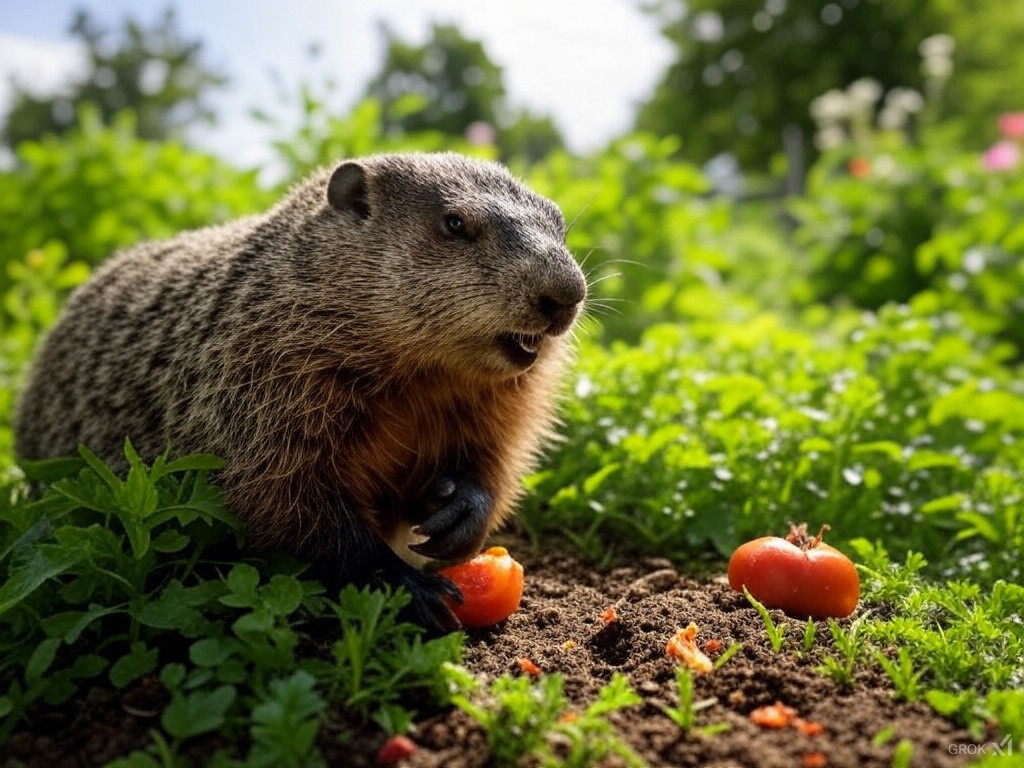Groundhogs, also known as woodchucks, can cause a variety of damage both in gardens and around houses. Mitigating this damage often involves trapping, exclusion techniques like fencing, planting deterrent plants or using repellents.
Here’s a detailed look at the types of damage they can inflict:
In the Garden:
- Vegetation Destruction:
- Eating Plants: Groundhogs are herbivores with a voracious appetite for garden vegetables like beans, peas, carrots, lettuce, and particularly tomatoes. They can strip a garden of these favorites quickly.
- Chewing: They might also nibble on the bark of young trees, which can girdle and kill them.
- Burrowing:
- Holes and Mounds: They dig extensive burrow systems which can ruin the layout of your garden, uproot plants, and disturb root systems, often leading to plant death or stunted growth.
- Soil Disturbance:
- By digging, they turn over soil, which can expose plant roots, leading to drying out or damage from sunlight.
Around the House:
- Structural Damage:
- Burrows: Groundhogs create burrows under structures like sheds, porches, decks, and even the foundation of houses. This can lead to:
- Foundation Compromise: Their digging can undermine the foundation, leading to structural instability.
- Settling: The soil they displace can cause settling or sinking of walkways, driveways, or even parts of the house.
- Burrows: Groundhogs create burrows under structures like sheds, porches, decks, and even the foundation of houses. This can lead to:
- Yard and Landscape Damage:
- Lawns: They can create numerous small mounds of dirt around their burrow entrances, ruining the aesthetics and functionality of a lawn.
- Landscaping: Flowers, shrubs, and other landscape plants might be eaten or damaged by their foraging.
- Utility Lines:
- Damage to Wires: They might chew on underground utility lines, including electrical, cable TV, or irrigation systems, leading to outages or expensive repairs.
- Erosion and Water Runoff:
- The holes they dig can alter natural water flow, potentially leading to erosion or water pooling in areas it shouldn’t.
Additional Considerations:
- Attracting Pests: The burrows can become homes for other pests like snakes, mice, or insects, adding another layer of nuisance.
- Health Risks: While groundhogs are not typically aggressive, they can carry fleas or ticks which might spread to pets or humans.
Mitigating this damage often involves humane trapping, exclusion techniques like fencing, or professional wildlife control services, alongside planting deterrent plants or using repellents. However, any control should be humane and consider local wildlife laws and regulations.

